MENTAL HEALTH ACTION DAY
Life Esidimeni portraits of memory: We must never forget
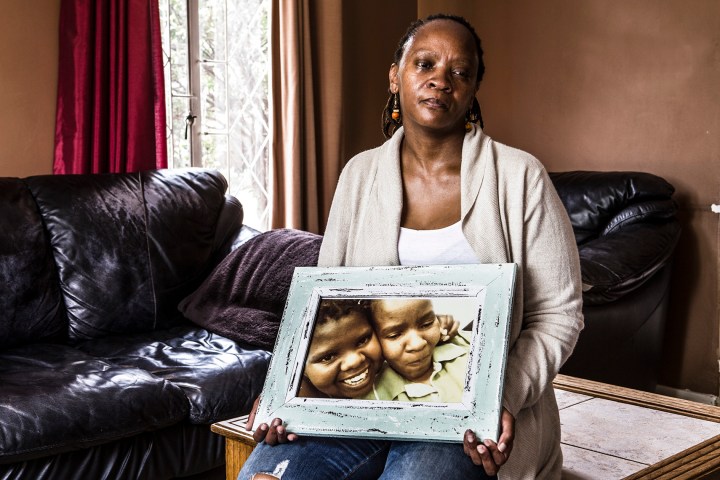
The Life Esidimeni online Memorial and Advocacy Project goes live on Thursday, 20 May to mark Mental Health Action Day. A total of 144 people died in the care of the public health system, from neglect and starvation. They died at the hands of those who were supposed to protect them.
The portraits below are part of an online Memorial and Advocacy Project about Life Esidimeni to be launched on Thursday (you can register here). The project, a partnership between the South African Depression and Anxiety Group, Section27, the South African Society of Psychiatrists (SASOP) and the Life Esidimeni Family Committee, pays tribute to the people who lost loved ones in the tragedy and puts a spotlight on the crisis of mental healthcare delivery in South Africa.
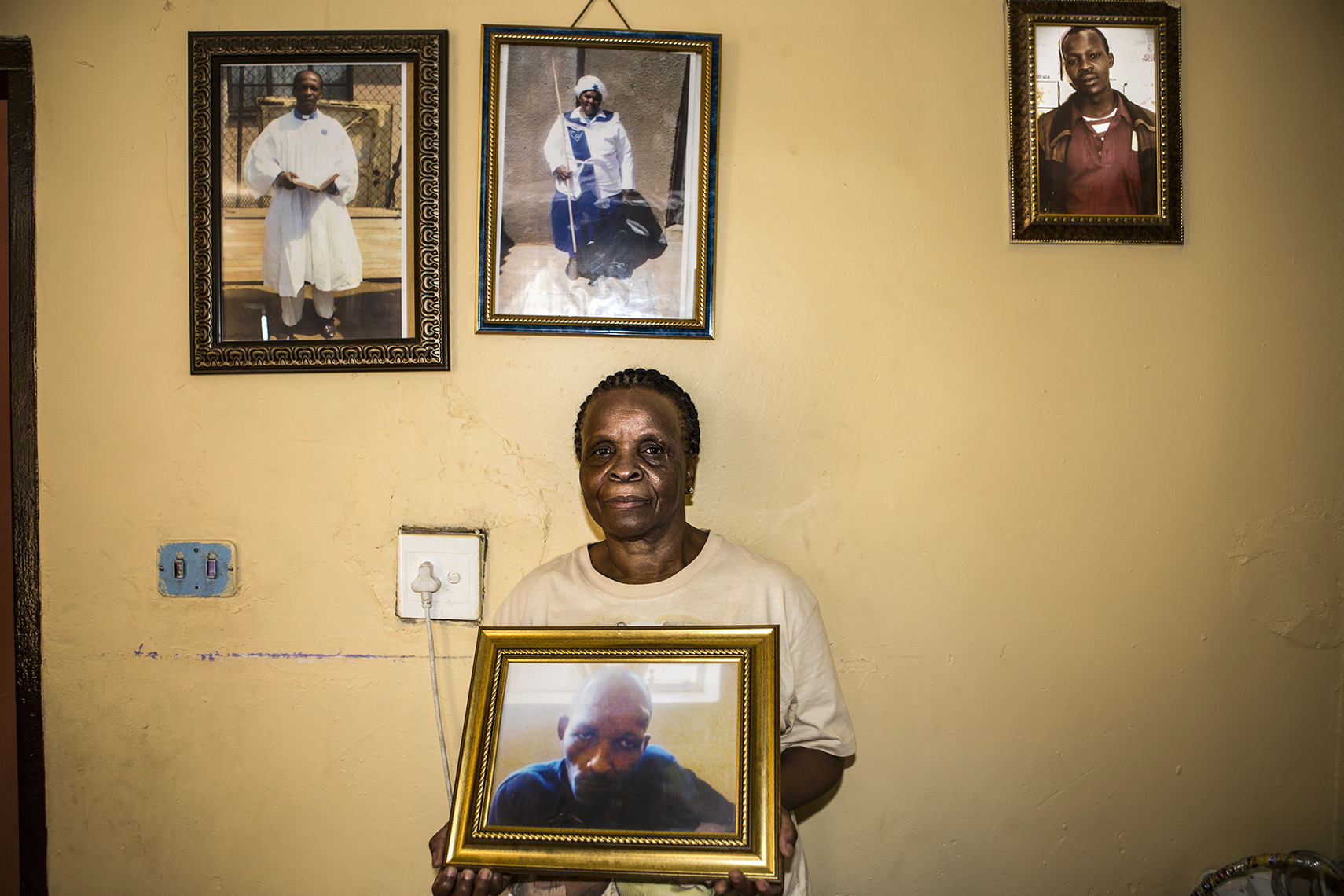
Elizabeth Phangela and her late brother Christopher Makhoba. (Photo: Mark Lewis)
Christopher was Elizabeth’s younger brother. This photograph was taken the last time she saw him. “He smiled at me that day,” Elizabeth remembers. “I had taken Russian and chips which we ate together. He was handsome and he had his new clothes on and I even sang to him because I was so happy.” Christopher died after he was moved from Life Esidimeni Waverley to Precious Angels NGO. No one told Elizabeth he had been moved and the family still doesn’t know how he died.
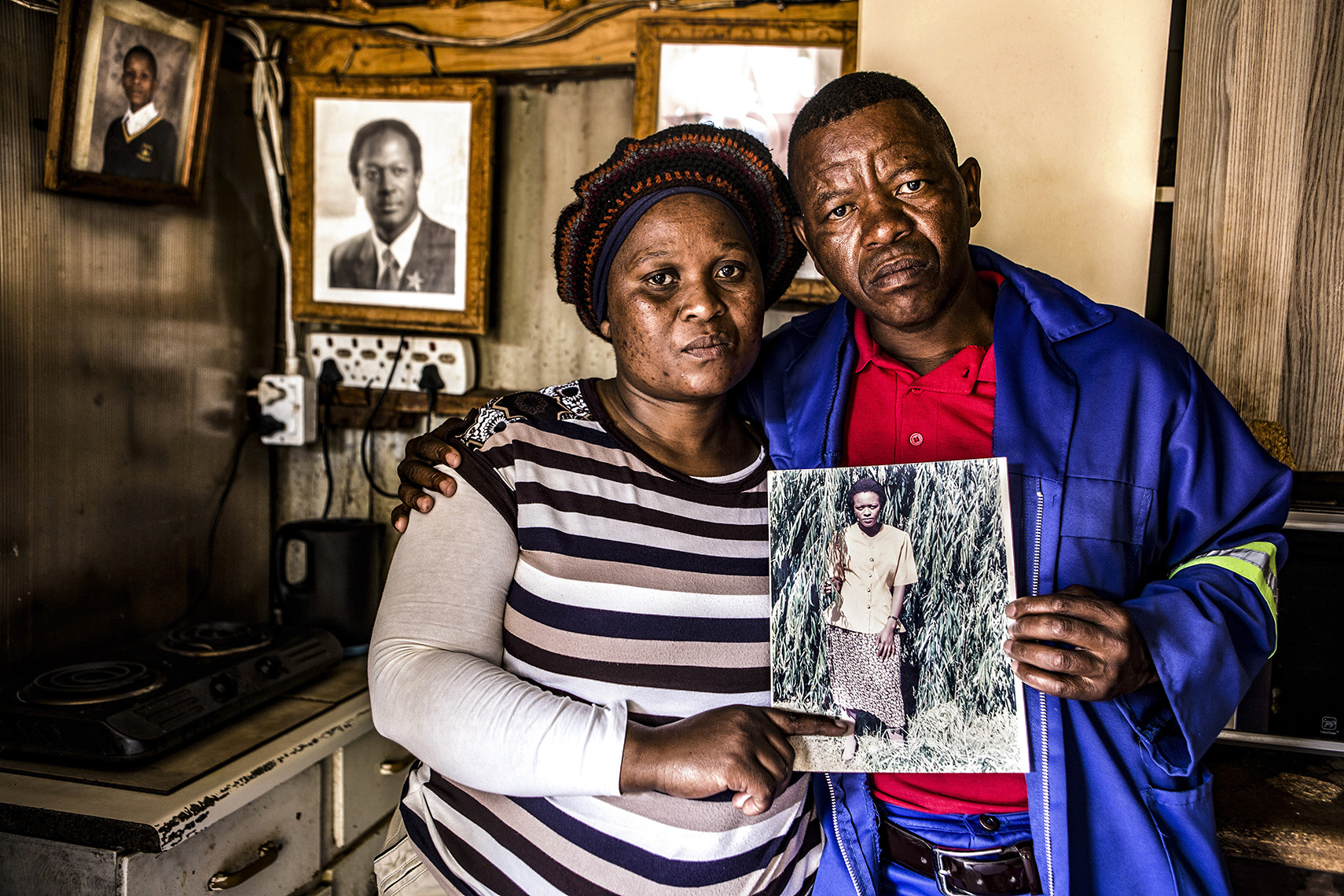
Daniel and Lydia Maretele and his late sister Maria Mpabane Maretele. (Photo: Mark Lewis)
Daniel and Lydia Maretele hold this beautiful photograph of Maria, his late sister. She is in a garden surrounded by trees and plants. “She worked in a nursery and loved plants,” Daniel says of his beloved older sister. Daniel and Lydia searched for Maria for a year and when they found out where she was, they were told she was dead. She had been buried but they wouldn’t tell him where. With legal support, Daniel got a court order that forced them to tell him where his sister’s body was. She had been buried in the gardens at Takalani Home, to which she had been moved.
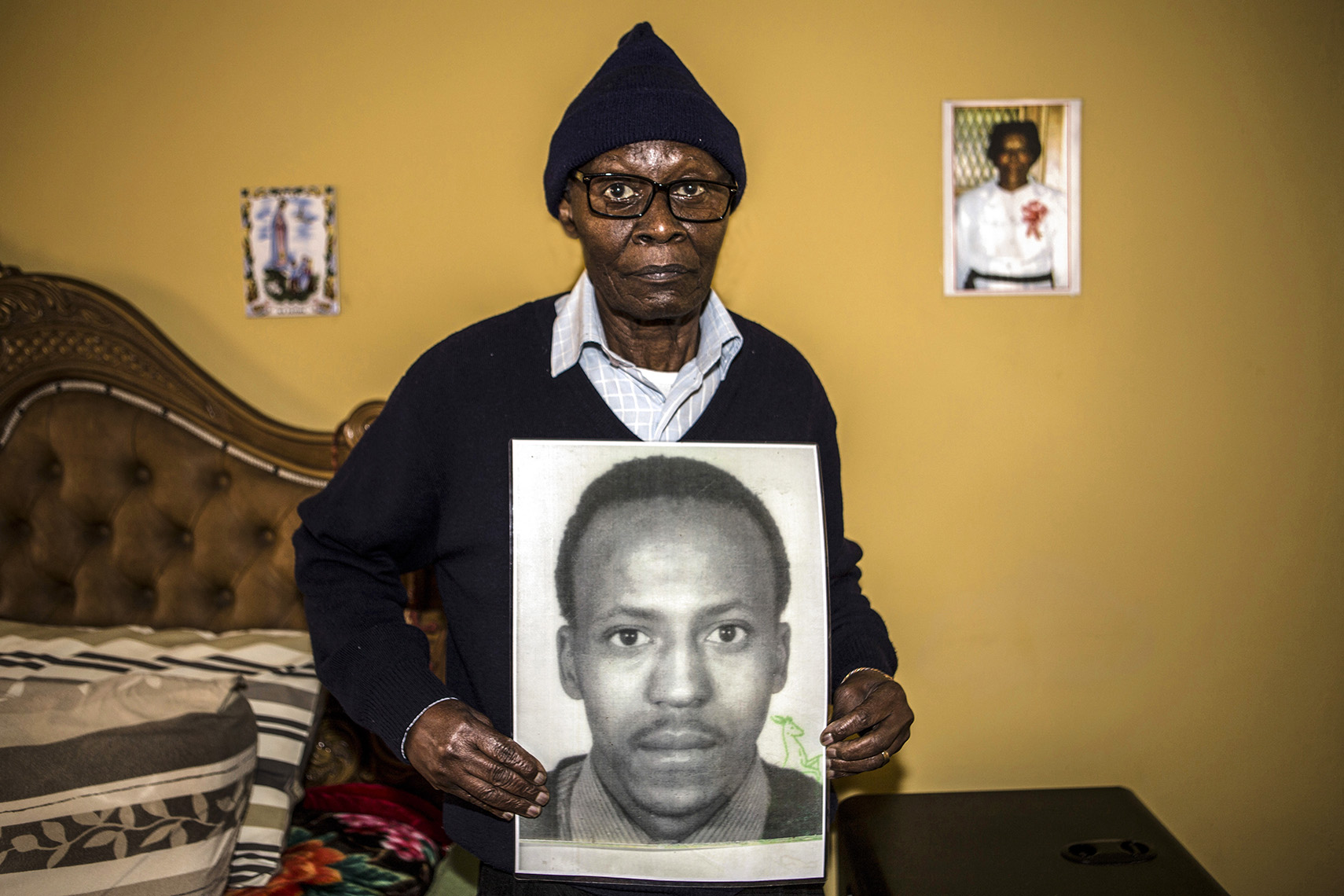
Reverend Maboe and his late son Hendrick ‘Billy’ Maboe. (Photo: Mark Lewis)
Reverend Maboe told us how much he loved this photo of Billy. His son was so proud that his father was a priest. “He was always saying to me, ‘Papa, you must behave very well. You must be like Bishop Tutu’.” It took Maboe a month to find Billy after he was moved from Life Esidimeni. He finally tracked him down to Bophelong in Hammanskraal, two hours from his home in Randfontein. Billy was shivering and hungry and died six days later.”
In total, 144 people died in the care of the public health system, from neglect and starvation. They died at the hands of those who were supposed to protect them. We photographed people in their homes, holding a picture that they selected of their brother, sister or child who had died. We travelled to their homes and on those long trips we experienced the vast distances that family members had to travel as they tried to find their loved ones. Some of the pictures were taken on the last day they saw their loved ones alive. Others at a family event. Some only had an official photo from an ID book. But no matter the photograph, each picture held meaning for those left behind.
These photographs and stories open a door to the past and shed light on the present.
For Darnell Nxumalo, coordinator of the project, getting involved was deeply personal. He lost his aunt, Virginia Machapelah, in the Life Esidimeni tragedy. He experienced a further tragedy when, on the first day of the arbitration proceedings, his cousin, Virginia’s daughter, collapsed and died suddenly. It is believed she died of broken heart syndrome. Shanice was 19 years old.
“Getting involved in this project had a sense of justice for me,” Darnell says. “Even though I knew what had happened because my family and I lived through my aunt’s terrible death and the loss of my cousin. Going out and learning everyone’s stories still shocked me. The graphic details they still remembered when they told their story. I was not prepared for that. Seeing how fresh their pain still was and how angry they felt that justice hadn’t yet been done.”
Mark Lewis, a well-known South African photographer, travelled with us to people’s homes to take the photographs. “I witnessed how raw their emotions were and how angry they still felt. Five years on, it was still so close to the bone,” he says. “But I also became aware of how so many people lived on the edge; many were unemployed, without a voice, living far out on the periphery. Even Google Maps couldn’t find them!”
While the Life Esidimeni story is one of unimaginable horror and hardship, it is also a story of great courage and tenacity. A story of ordinary people who worked tirelessly for two years to seek justice. It demonstrates the power of people to find strength in one another, organise, fight back and hold the government to account.

Maud Motsoahae and her late mother Matlakala Elizabeth Motsoahae with her granddaughter Lwas. (Photo: Mark Lewis)
Maud Motsoahae’s mother was moved from Life Esidimeni Randfontein. Maud searched for her mother for months and finally found her at Precious Angels, sick, dehydrated and unable to sit up straight. Her mom died soon afterwards. “After my mother died I was lost. I sat in a corner and cried for months and months. One day I was listening to the radio and I heard there was a protest march in town. Families whose loved ones had also died were marching. I got up and drove straight there to join them. Since that day, I no longer felt I had to fight alone.”
How did so many people come together, to create one of the most powerful social movements this country has seen post-apartheid?
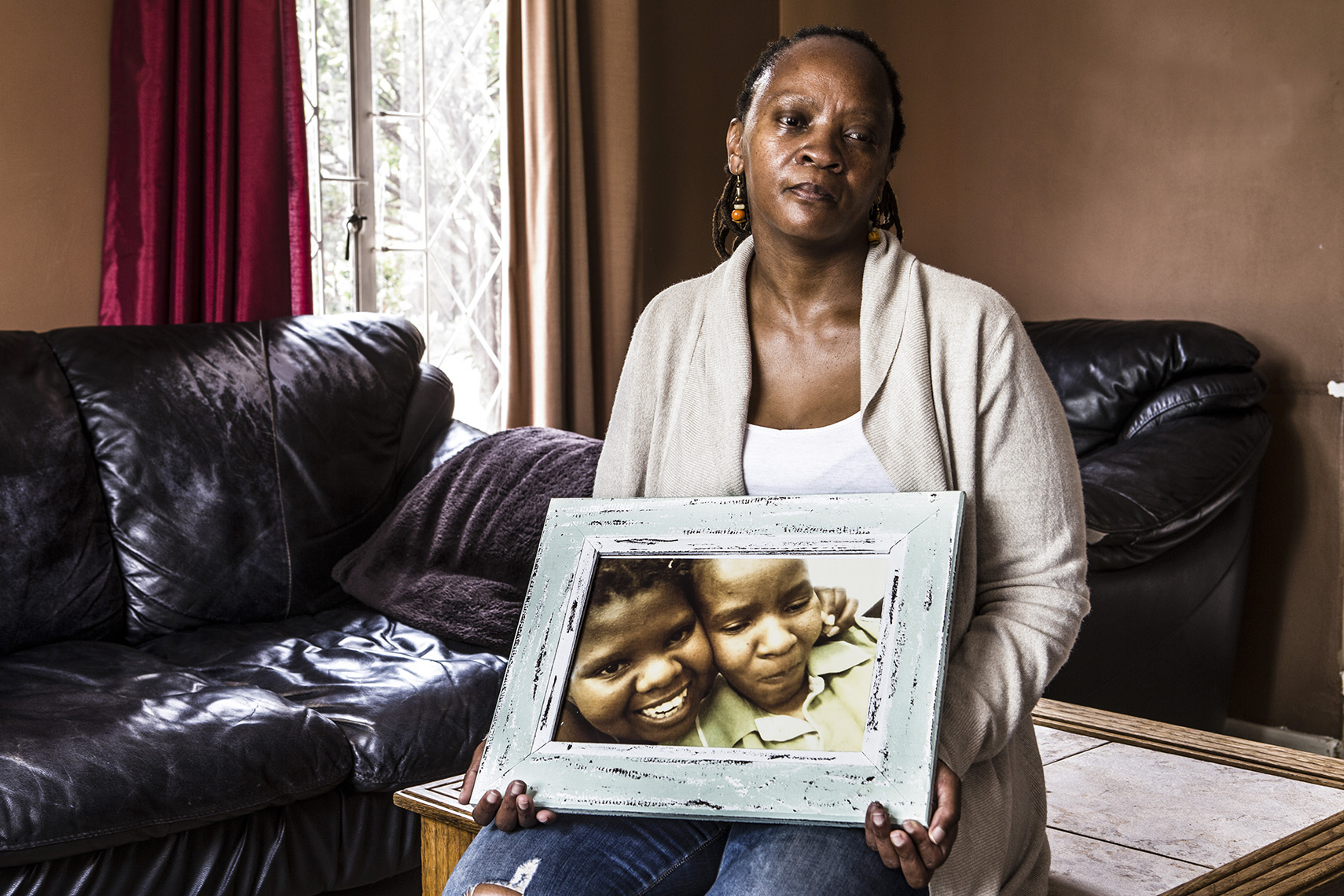
Christine Nxumalo and her late sister Virginia Macapelah and daughter Shanice. (Photo: Mark Lewis)
Christine Nxumalo, a key organiser on the Life Esidimeni Family Committee, recalls:
“In the beginning, the families didn’t even know each other. When I first met other families at a meeting at Randfontein, I was taken aback by how many people were affected by this nightmare. We just wanted answers. Why were our loved ones treated so horribly? We were not asking for much.
“What drove us was that this shared crisis was deeply personal and painful. But SADAG and Section27 held us up when it all felt overwhelming and pulled us together. They helped focus our anger; met with us, helped us organise and offered counselling and advice. There was a constant flow of information keeping us up to date with what was happening.”
Family members, supported by SADAG, formed a WhatsApp group to help one another search for their loved ones.
Cassey Chambers from SADAG recalls: “It was amazing! People were taking pictures and sharing instantly to help others find people who were being moved. Or they would phone us to say I don’t know where my loved one is and then we would try to help source information.”
Over a couple of months, SADAG took thousands of calls and worked tirelessly to help families find mothers, brothers, sisters and children who had been moved.
And at Section27, a committed and dedicated team worked round the clock for months. Advocate Adila Hassim, legal counsel in the arbitration, and attorney Sasha Stevenson remember long days preparing — marathon sessions, meeting the families, offering counselling and gathering statements and evidence.
Sasha recalls: “It was extremely intense for months before the arbitration because we had to get full affidavits with supporting information from all of our clients and new clients were coming in every day, and so we had people taking evidence. Some people came in the day after their loved one died. They came here right in the depths of grief.”
And amid all of this, Christine witnessed a change among family members. “In the beginning, there were people who felt there was no point. Our government will not do anything and we can’t stop them. There is no justice. But as we gained momentum I saw them start to believe in themselves. I watched them see that they could do something.”
The new website
The Life Esidimeni website and advocacy project is an ongoing effort to gather stories and information on both Life Esidimeni and the state of mental health. It will also include a feature film, now being written (and to be directed) by acclaimed South African screenwriter and director Craig Freimond. He has been working on the project for the past two years.
“One of the fascinating aspects of screenwriting is that you have to get to know the world you are writing about inside out so that you can tell a truthful and moving story. This has meant interviews with doctors, psychologists, lawyers and, most importantly, the family of people who died in this tragedy. It has been a gruelling and heartbreaking process. I remember driving my car listening to a recording Harriet had done with operations director Cassey Chambers from SADAG. I had to pull the car over to the side of the road because I was crying so much.”
“But there was something else in this story, there was a resistance, a coming together of a community and a fight that was so inspiring. This film will allow an audience to experience some of what the families went through. To see it and feel it, to be moved and inspired.”
The film should be out in 2022.
Never Again
While some measure of justice has been achieved, the conditions that gave rise to the tragedy have not gone away. Justice remains unfinished and those responsible have not been charged.
The phrase “Never Again” slips easily off the tongue. Sadly, all too often that’s where it stops. What do we do to hold the government to account? How do we ensure the rights of mental healthcare patients and families are upheld?
One way is through an initiative like this.
Cassey explains: “At SADAG we believe it is essential to educate people about mental health. We must break the silence so that families and people with a mental illness feel confident and safe to seek the help they need. People living with a mental health issue deserve the same rights and respect as anyone else. They have a right to help and treatment.”
But mental health facilities are often busy, overwhelmed and far from where people live. Many people do seek help and the system simply fails them. Life Esidimeni is our most shocking and shameful proof of that.
“This initiative seeks to give substance to the call ‘never again’,” says Cassey. “The website not only links people to services and support through our free counselling helplines and nationwide resources, but also helps people to navigate the mental health system when they get stuck.”
Stuck on the helpline that no one answers?
Stuck after sending numerous emails or SMSes that go unanswered?
Stuck when your meds run out and no one at the clinic can help you?
Stuck when the healthcare professional or facility is the one who is violating your rights?
“SADAG’s referral and SMS lines support reporting all complaints,” Cassey says. “But we go one step further. We are trying to assist the most vulnerable and isolated in our community to navigate an often complicated and messy pathway to seek the help they need.”
Looking back, former director of SECTION27, Mark Heywood, remembers the time after the arbitration.
“I did hope that out of the Life Esidimeni tragedy would be born a kind of campaign around access to mental healthcare in the country. Put a voice and a face to people with mental illness and start to get it, the level of resources and attention that it needs. But it hasn’t really happened.”
This campaign is just a small part of what is needed. But we must never forget what happened. And we remember in order to act, find justice and ensure it never happens again. DM/MC





















 Become an Insider
Become an Insider
Comments - Please login in order to comment.